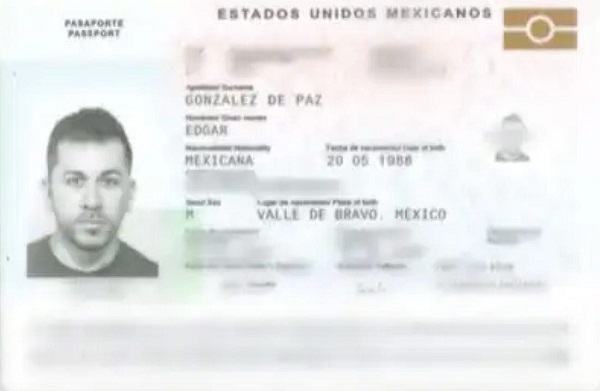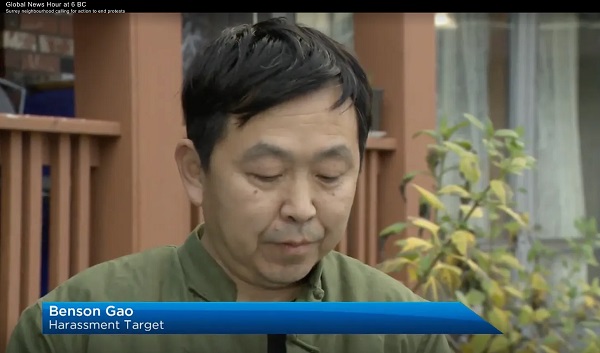National
Four years, $10,000, one frog: Inside Parks Canada’s costly frog cull

From the Canadian Taxpayers Federation
Author: Ryan Thorpe
It took Parks Canada four years and $10,000 to capture a bullfrog in British Columbia.
“Kids spend zero dollars actually catching frogs, but Parks Canada managed to spend several years and thousands of tax dollars not capturing a single frog,” said Franco Terrazzano, Federal Director of the Canadian Taxpayers Federation. “Did Parks Canada put Mr. Magoo in charge of this particular operation?”
Between 2018-19 and 2022-23, Parks Canada launched a series of unsuccessful culls of the American Bullfrog at the Gulf Islands National Park Reserve, according to access-to-information records obtained by the CTF.
The Gulf Islands National Park Reserve is a collection of 15 islands and 30 islets off the southern coast of B.C.
In 2018-19, Parks Canada spent $1,920 attempting to cull the American Bullfrog from these lands, but did not manage to kill a single frog.
The following year, Parks Canada spent $2,000 and again struck out.
The cull took a temporary hiatus in 2020-21, according to the records.
In 2021-22, Parks Canada spent another $2,207 on the cull, but once again failed to kill any bullfrogs.
Finally, in 2022-23, after years of failure, Parks Canada spent $3,882 and managed to kill one frog.
Between the years of 2018-19 and 2022-23, Parks Canada spent $10,009 on these frog hunts, capturing a single American Bullfrog in the process.
“The frogs appear to be slipping through the fingers of Parks Canada bureaucrats just as fast as our tax dollars are,” Terrazzano said. “Parks Canada keeps proving it’s very bad at hunting, but very good at wasting money.”
The American Bullfrog is the largest species of frog in North America, and is native to southern Ontario, Quebec, New Brunswick and Nova Scotia. It was “introduced” to B.C., according to the Canadian Encyclopaedia.
A Parks Canada brochure for the Gulf Islands National Park Reserve describes American Bullfrogs as “real bullies” that “prey on any animal they can overpower and stuff down their throat.”
In 2023-24, Parks Canada’s annual bullfrog hunt at the Gulf Islands National Park Reserve finally hit the jackpot, killing 100 bull frogs at a price tag of $5,079.
The frogs killed by Parks Canada so far have come at a hit to taxpayers of $149 a head.
The records obtained by the CTF detail all Parks Canada animal culls conducted between the years of 2018-19 and 2023-24, as well as any planned future spending.
During that time period, Parks Canada spent a combined $2.6 million on animal hunts targeting moose, deer, doves, foxes, frogs and rats, alongside different species of fish.
Parks Canada plans to spend an additional $3.3 million on animal culls in the coming years. The overall animal cull bill that Parks Canada plans to send to taxpayers sits at $5.9 million.
The highest profile of these animal culls is taking place on Sidney Island in B.C., with Parks Canada spending more than $800,000 on phase one of the hunting operation, which took down 84 deer, at a cost of $10,000 a head.
Residents of Sidney Island organized their own hunt last fall, killing 54 deer at no cost to taxpayers.
So far, Parks Canada has employed exotically expensive hunting techniques on Sidney Island, bringing in expert marksmen from the U.S. and New Zealand and renting a helicopter for $67,000.
Phase two of the operation is set for this fall and will involve ground hunting with dogs.
That deer hunt is part of a $12-million Parks Canada project, officially called the Fur To Forest program, aimed at eradicating the European fallow deer population on Sidney Island and restoring native vegetation, tree seedlings and shrubs.
“The Sidney Island deer hunt has already proven to be an utter disaster and Parks Canada should cut taxpayers’ losses and cancel phase two,” Terrazzano said. “Parks Canada should stop cosplaying as Rambo on the hunt for deer and frogs before it wastes even more of our money.”
Health
Lack of adequate health care pushing Canadians toward assisted suicide

From LifeSiteNews
The family of an elderly man is speaking out about the terrible hospital conditions that led their father to request euthanasia before he died of natural causes.
The family of Cleo Gratton, an 84-year-old retired diamond driller who died earlier this month in Chelmsford, Ontario, of natural causes after being approved for assisted suicide, is speaking publicly about their appalling experience in the Canadian healthcare system.
According to the CBC, the elderly man “told his family he would rather die than go back to Health Sciences North in Sudbury,” and that a recent stay there found Gratton, who was suffering from heart disease and kidney failure, spending one night in the emergency room and then being transferred to a bed sitting in the hallway on the seventh floor.
“There were no lights, all the bulbs in that hallway had been completely removed,” his daughter, Lynn, told the CBC. “The only light we had was almost like a desk lamp that had been bolted to the wall. Patients are passing by, nurses are going by, no privacy, no compassion, no dignity.” The visit took place in mid-October, after which Gratton decided to apply for “medical aid in dying,” or assisted suicide.
Lynn said that nurses had to use headlamps to inspect her father’s feet, and that the experience was “just one thing after another and it really opened our eyes to what’s going on in our hospitals. My dad said, ‘Push, push, push for change. Make people aware of what’s gong on. Open the discussion, bring it to your MP, your MPP, keep going straight up.”
His family is now honoring his wishes to speak out about his experience. The doctors and nurses, Lynn emphasized, were “amazing,” but she noted that they seem overworked. “Why are they still taking in patients if we have an overcrowding issue and they have no place to put these people?” she said.
Cleo Gratton, who died of natural causes surrounded by his family before he could go through with assisted suicide, is just the most recent of many examples of Canadians opting for assisted suicide because they could not access the care that they actually desired.
In Quebec last year, Norman Meunier, a quadriplegic man, developed bedsores after four days left on an ER stretcher without a good mattress. That experience combined with lack of available homecare pushed him to request, and receive, assisted suicide.
An unnamed woman in her 80s, referred to in a MAID report as “Mrs. B,” received MAID earlier this year after requesting but being denied palliative or hospice care. Instead, with her spouse burning out as the result of her care, a rushed MAID assessment was completed, and she died by lethal injection.
In 2022, 44-year-old Winnipeg woman Sathya Dhara Khovac died by euthanasia after failing to receive the homecare resources she had desperately sought. In her posthumous obituary, she said she could have had more time if she’d had more help.
In 2019, 41-year-old Sean Tagert was euthanized after spending years attempting to find and fund the homecare and resources he needed to stay in the community where his son lived. He did not want to die but felt that he had no other choice.
And, among other stories, at least four Canadian veterans were offered assisted suicide in lieu of the unavailable mental health supports they were requesting.
Stories of Canadians seeking palliative care, mental health resources, homecare, and other medical support finding that the only option available to them is assisted suicide have become routine over the past several years. Euthanasia has become a pressure valve for an overworked and under-funded healthcare system serving an aging population increasingly need of complex care — and if assisted suicide for mental illness is legalize, things will get much, much worse.
Crime
CBSA Bust Uncovers Mexican Cartel Network in Montreal High-Rise, Moving Hundreds Across Canada-U.S. Border

A court document cited by La Presse in prior reporting on the case.
The conviction targets Edgar Gonzalez de Paz, 37, a Mexican national identified in court evidence as a key organizer in a Montreal-based smuggling network that La Presse documented in March through numerous legal filings.
According to the Canada Border Services Agency, Gonzalez de Paz’s guilty plea acknowledges that he arranged a clandestine crossing for seven migrants on January 27–28, 2024, in exchange for money. He had earlier been arrested and charged with avoiding examination and returning to Canada without authorization.
Breaking the story in March, La Presse reported: “A Mexican criminal organization has established itself in Montreal, where it is making a fortune by illegally smuggling hundreds of migrants across the Canada-U.S. border. Thanks to the seizure of two accounting ledgers, Canadian authorities have gained unprecedented access to the group’s secrets, which they hope to dismantle in the coming months.”
La Presse said the Mexico-based organization ran crossings in both directions — Quebec to the United States and vice versa — through roughly ten collaborators, some family-linked, charging $5,000 to $6,000 per trip and generating at least $1 million in seven months.
The notebooks seized by CBSA listed clients, guarantors, recruiters in Mexico, and accomplices on the U.S. side. In one April 20, 2024 interception near the border, police stopped a vehicle registered to Gonzalez de Paz and, according to evidence cited by La Presse, identified him as one of the “main organizers,” operating without legal status from a René-Lévesque Boulevard condo that served as headquarters.
Seizures included cellphones, a black notebook, and cocaine. A roommate’s second notebook helped authorities tally about 200 migrants and more than $1 million in receipts.
“This type of criminal organization is ruthless and often threatens customers if they do not pay, or places them in a vulnerable situation,” a CBSA report filed as evidence stated, according to La Presse.
The Montreal-based organization first appeared on the radar in a rural community of about 400 inhabitants in the southern Montérégie region bordering New York State, La Presse reported, citing court documents.
On the U.S. side of the line, in the Swanton Sector (Vermont and adjoining northern New York and New Hampshire), authorities reported an exceptional surge in 2022–2023 — driven largely by Mexican nationals rerouting via Canada — foreshadowing the Mexican-cartel smuggling described in the CBSA case.
Gonzalez de Paz had entered Canada illegally in 2023, according to La Presse. When officers arrested him, CBSA agents seized 30 grams of cocaine, two cellphones, and a black notebook filled with handwritten notes. In his apartment, they found clothing by Balenciaga, a luxury brand whose T-shirts retail for roughly $1,000 each.
Investigators have linked this case to another incident at the same address involving a man named Mario Alberto Perez Gutierrez, a resident of the same condo as early as 2023.
Perez Gutierrez was accompanied by several men known to Canadian authorities for cocaine trafficking, receiving stolen goods, armed robbery, or loitering in the woods near the American border, according to a Montreal Police Service (SPVM) report filed as evidence.
The CBSA argued before the immigration tribunal that Gonzalez de Paz belonged to a group active in human and drug trafficking — “activities usually orchestrated by Mexican cartels.”
As The Bureau has previously reported, Justin Trudeau’s Liberal Cabinet was warned in 2016 that lifting visa requirements for Mexican visitors would “facilitate travel to Canada by Mexicans with criminal records,” potentially including “drug smugglers, human smugglers, recruiters, money launderers and foot soldiers.”
CBSA “serious-crime” flags tied to Mexican nationals rose sharply after the December 2016 visa change. Former CBSA officer Luc Sabourin, in a sworn affidavit cited by The Bureau, alleged that hundreds of cartel-linked operatives entered Canada following the visa lift.
The closure of Roxham Road in 2023 altered migrant flows and increased reliance on organized smugglers — a shift reflected in the ledger-mapped Montreal network and a spike in U.S. northern-border encounters.
The Bureau is a reader-supported publication.
To receive new posts and support my work, consider becoming a free or paid subscriber.
-

 Daily Caller6 hours ago
Daily Caller6 hours agoUS Nuclear Bomber Fleet Shares Fence With Trailer Park Linked To Chinese Intel-Tied Fraudster
-

 espionage5 hours ago
espionage5 hours agoChinese-Owned Trailer Park Beside U.S. Stealth Bomber Base Linked to Alleged Vancouver Repression Case
-

 Alberta2 days ago
Alberta2 days agoSchool defunding petition in Alberta is a warning to parents
-

 Daily Caller4 hours ago
Daily Caller4 hours agoLaura Ingraham Presses Trump On Allowing Flood Of Chinese Students Into US
-

 Agriculture2 days ago
Agriculture2 days agoBovaer Backlash Update: Danish Farmers Get Green Light to Opt Out as UK Arla Trial Abruptly Ends!
-

 International2 days ago
International2 days agoBBC boss quits amid scandal over edited Trump footage
-

 Daily Caller2 days ago
Daily Caller2 days agoMcKinsey outlook for 2025 sharply adjusts prior projections, predicting fossil fuels will dominate well after 2050
-

 Crime2 hours ago
Crime2 hours agoCBSA Bust Uncovers Mexican Cartel Network in Montreal High-Rise, Moving Hundreds Across Canada-U.S. Border






